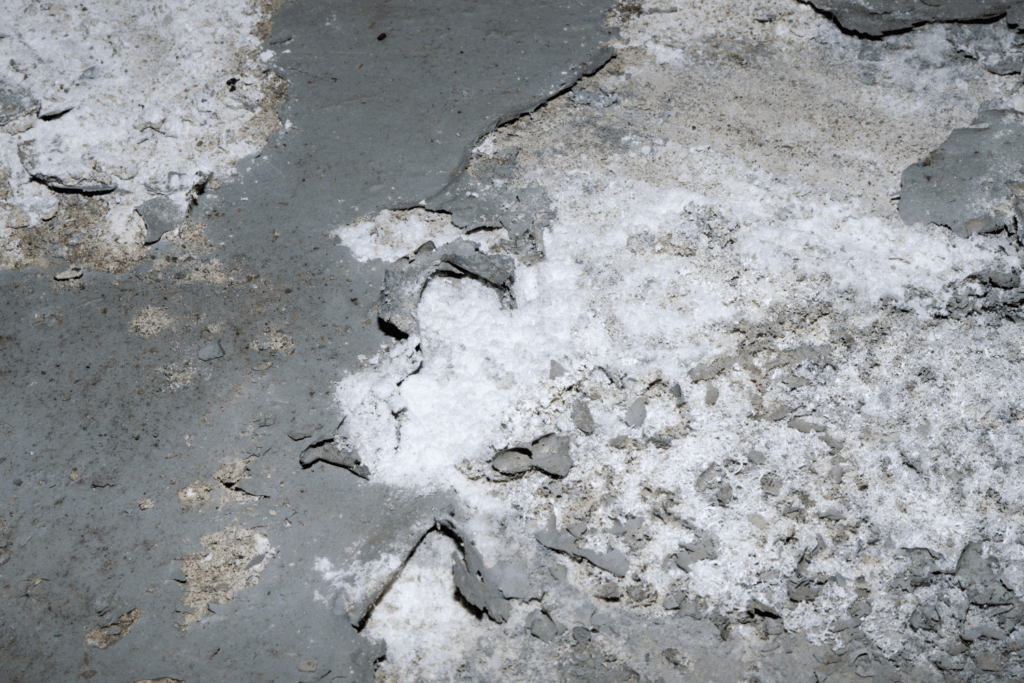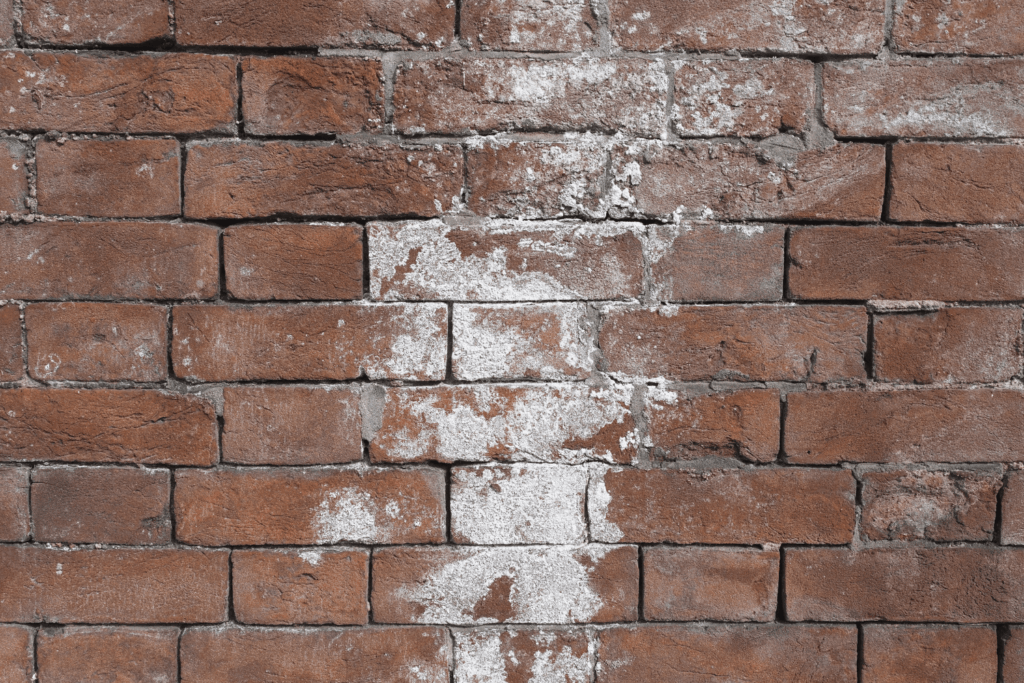You may have noticed a white, chalky substance forming on your basement walls. At first glance, it might look like mold or dust, but it’s actually a common issue known as efflorescence. While not structurally dangerous on its own, efflorescence signals deeper moisture problems that shouldn’t be ignored.
In this guide, we’ll explore what causes efflorescence in the basement, how to safely remove it, and (most importantly) what basement waterproofing steps to take to prevent it from returning.
What Is Efflorescence and Why Does It Happen?

Efflorescence is a white or grayish crystalline deposit that appears on masonry, concrete, or brick surfaces. It’s caused by water moving through these porous materials and carrying soluble salts to the surface. As the water evaporates, it leaves behind the efflorescent powder you see on your basement walls.
This usually occurs in basements where moisture is present inside the concrete walls or floor slab. The source can be groundwater, rain runoff, or even humidity in the air. While the salt deposits are harmless in themselves, their presence is a red flag that water is making its way through your foundation.
Is Efflorescence the Same as Mold?
Efflorescence is often mistaken for mold, but they are quite different. Efflorescent deposits are dry, powdery, and easily brushed off. Mold, by contrast, is organic, typically darker in color, and often accompanied by a musty odor. A quick test: if it dissolves in water or disappears when you spray it, it’s likely efflorescence.
That said, ongoing moisture problems can lead to mold if left unchecked. So while efflorescent powder isn’t hazardous itself, the conditions that cause it can lead to health issues over time.
Common Causes of Efflorescence in Basements
Several factors can contribute to efflorescence, including:
- Poor exterior drainage: Water pooling near the foundation can seep into the concrete walls.
- Unsealed basement walls or floors: Porous surfaces allow moisture to penetrate and travel.
- High humidity or condensation: Especially common in basements with limited airflow.
- Hydrostatic pressure: Groundwater pressure pushes moisture through basement walls from the outside.
Understanding the source of water is crucial in crafting the right basement waterproofing strategy.
How to Remove Efflorescence from Basement Walls
If you’ve spotted efflorescence in your basement, your first step is removal. It’s important to clean the surface before applying any waterproofing solutions.
Here’s how:
- Dry brush the area: Use a stiff-bristled brush to remove the powder. Avoid using water initially, as moisture can make the problem worse.
- Apply a diluted vinegar solution or commercial efflorescence cleaner: Gently scrub the area, then rinse with clean water.
- Dry thoroughly: Use fans or a dehumidifier to ensure the area dries completely. Any lingering moisture will encourage new salt deposits.
Keep in mind: removing efflorescence is cosmetic. To prevent recurrence, you must address the underlying moisture.
Preventing Efflorescence with Basement Waterproofing
To stop efflorescence at the source, you need to control the movement of water in and around your basement. Here are several effective basement waterproofing methods:

1. Improve Exterior Drainage
Make sure your gutters and downspouts are functional and direct water at least 10 feet from your foundation. Regrade soil around your home to slope away from the structure.
2. Seal Interior Walls
Use a breathable masonry sealant to create a barrier that prevents moisture migration while allowing vapor to escape. Avoid paints or coatings that trap moisture within the wall, as this can lead to bigger problems down the road.
3. Install a Sump Pump
If water accumulation is ongoing, a sump pump will actively remove groundwater from your basement. Pair it with a battery backup to keep it running during power outages.
4. Add a Dehumidifier
Even if you fix water intrusion, indoor humidity can still cause moisture buildup on walls. A basement-grade dehumidifier helps maintain relative humidity below 50%, ideal for keeping efflorescence and mold at bay.
5. Consider a French Drain or Drain Tile System
For homes with persistent water pressure issues, these systems relieve hydrostatic pressure and redirect water safely to the sump pit or exterior outlet.
When to Call a Professional
If you’ve cleaned efflorescence multiple times and it keeps returning, or if it’s accompanied by wall cracks, wet spots, or mold, then DIY solutions may not be enough. A professional waterproofing contractor can assess your foundation, identify the source of water intrusion, and implement long-term structural and moisture-control solutions tailored to your home.
Your Long-Term Plan for a Dry, Healthy Basement
Efflorescence may not be as alarming as mold or standing water, but it’s a warning sign you shouldn’t ignore. That white efflorescent powder on your basement walls means moisture is seeping in, and where there’s moisture, more serious problems can follow. By addressing both the symptom and the source through effective basement waterproofing, you can protect your home’s structure and your peace of mind.If you’re dealing with recurring efflorescence or suspect a deeper issue, don’t wait for it to worsen. AM Wall Anchor & Waterproofing offers expert diagnostics and solutions to keep your basement dry, clean, and protected.

